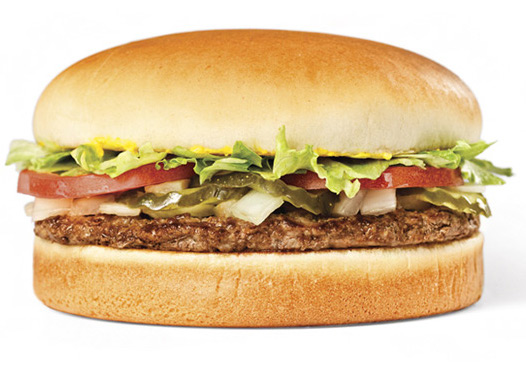p://well.blogs.nytimes.com/2015/08/24/concussions-can-occur-in-all-youth-sports/?_r=0
Just as warning and perhaps a preventative help.
I wouldn't like it, for any of the Grand-Children, any other Child, to be Locked in this GULAG like I am .
http://well.blogs.nytimes.com/2015/08/24/concussions-can-occur-in-all-youth-sports/?_r=0
Just as warning and perhaps a preventative help.
Recent attention to long-term brain damage linked to multiple concussions among professional football players has prompted a much closer look at how children and adolescents who participate in sports can be protected from similar consequences.
And with good reason.
young brain is especially susceptible to concussion, and sports-related concussions account for more than half of all emergency room visits by children aged 8 through 13, according to the National Athletic Trainers’ Association. A child who suffers a concussion is one and a half times more likely to experience another, and those who have had two concussions have a threefold greater risk of the same injury happening again.
Many parents wonder if it is wise to let their children participate in sports like football and soccer, in which head injuries are most common. Concerns about concussion have been cited as a reason for a decline in enrollment in Pop Warner, the country’s largest youth football program.
At the same time, misconceptions among parents and coaches abound about the seriousness of concussions and how best to prevent them, especially for players who often think they are invincible and say they feel fine so they can get back in the game. Studies have found that more than 50 percent of high school athletes and 70 percent of college athletes failed to report concussions they had sustained while playing football.
But first, it is worth noting that almost no sport is free of a concussion hazard, and that participating in sports has “cognitive, physical, emotional and social benefits that outweigh everything,” said Steven P. Broglio, the director of the Neurotrauma Research Lab at the University of Michigan and the lead author of the National Athletic Trainers’ Association position statement on how best to deal with concussions among young athletes.
For far too long, concussions have been minimized, with youngsters who have sustained one often going back into the game much sooner than they should, sometimes on the very day they are injured. Experts say that even the language commonly used to describe a hit — like “ding” or “bell ringer” — minimizes the seriousness of the injury and should be abandoned.
Perhaps concussions would command greater respect if they were called by their proper medical term: mild traumatic brain injuries. A concussion is caused by a direct or indirect blow to the head. The brain is jostled against an unyielding skull, temporarily disrupting normal neurological and metabolic functions.
Contrary to popular belief, you don’t have to lose consciousness to have sustained a concussion. Ninety percent of concussions involve no loss of consciousness or only a brief disruption of mental alertness. You don’t even have to hit your head — a whiplash injury can cause one.
Furthermore, the usual five-minute assessment done on the sidelines to check an injured athlete’s ability to orient, remember, concentrate and recall words “misses about 40 percent of concussions,” Dr. Broglio said in an interview. “A single test is not diagnostic and should not be relied on. Multiple different tests taken together can increase the sensitivity to the mid- to upper 90s.”
However, the time allotted to assess an injured athlete on the sidelines is often inadequate to determine whether it is safe for a player to go back in the game, Dr. Broglio said. One of the most dangerous effects of failing to detect a concussion and allowing time for a young athlete to recover fully is second-impact syndrome — rapid, catastrophic swelling of the brain that can cause lifelong impairments, coma and even death — should the athlete have another concussion.
A growing number of parents now weigh the risks of concussion when helping their children decide which sport to pursue. The Institute of Medicine and the National Research Council of the National Academy of Sciences reported in 2012 that tackle football players sustained the most concussions among high-school-age athletes, with 11.2 reported among 10,000 “athletic exposures” — the number of practices and games in which an athlete participates. Lacrosse was the next riskiest, with 6.9 concussions per 10,000 athletic exposures, although one recent study found ice hockey and wrestling to be more hazardous than lacrosse.
Among girls, soccer is associated with the highest risk — 6.7 concussions per 10,000 athletic exposures, according to the academy study. Although many focus on the hazards of heading the ball, a new study of high school soccer players found that contact with another player was by far the most frequent cause of concussions among female and male players.
The study’s authors, from the University of Colorado School of Public Health, predicted that “banning heading is unlikely to eliminate athlete-athlete contact or the resultant injuries.” They noted that soccer had become a much more physical sport in recent years, resulting in more collisions between players.
Girls’ basketball is not far behind, with 5.6 concussions per 10,000 exposures, a rate twice that of boys’ basketball.
Gymnastics has seen a sharp rise in concussions in re
t years. As the USA Gymnastics organization pointed out last year, “a concussion can be caused by a hit to the body, not just the head. A gymnast could fall, have a whiplash type movement and sustain a concussion even though they didn’t hit their head.”
The lowest concussion rate is associated with swimming, with only 0.2 such injuries per 10,000 exposures among girls and 0.1 among boys who swim competitively, according to a 2012 study in The American Journal of Sports Medicine.
Every athlete, parent and coach should be familiar with the signs and symptoms of concussion, some of which may show up hours or days after the injury. The athletic trainers’ report includes these:
■ Difficulty thinking clearly, concentrating or remembering new information.
■ Headache, blurry vision, queasiness or vomiting, dizziness or balance problems or sensitivity to noise or light.
■ Irritability, moodiness, sadness or nervousness.
■ Excessive sleepiness or difficulty falling asleep or remaining asleep.
Any of these should be reported without delay to a coach, athletic trainer, parent or school nurse. Especially worrisome is a symptom that gets worse with time.
All 50 states and the District of Columbia have laws to protect young athletes suspected of having sustained a head injury. Most important, the laws stipulate that no one with even a slight concussion should return to play the day of injury. The athlete should be evaluated and cleared by a health care provider trained to do so before returning.


![]()









